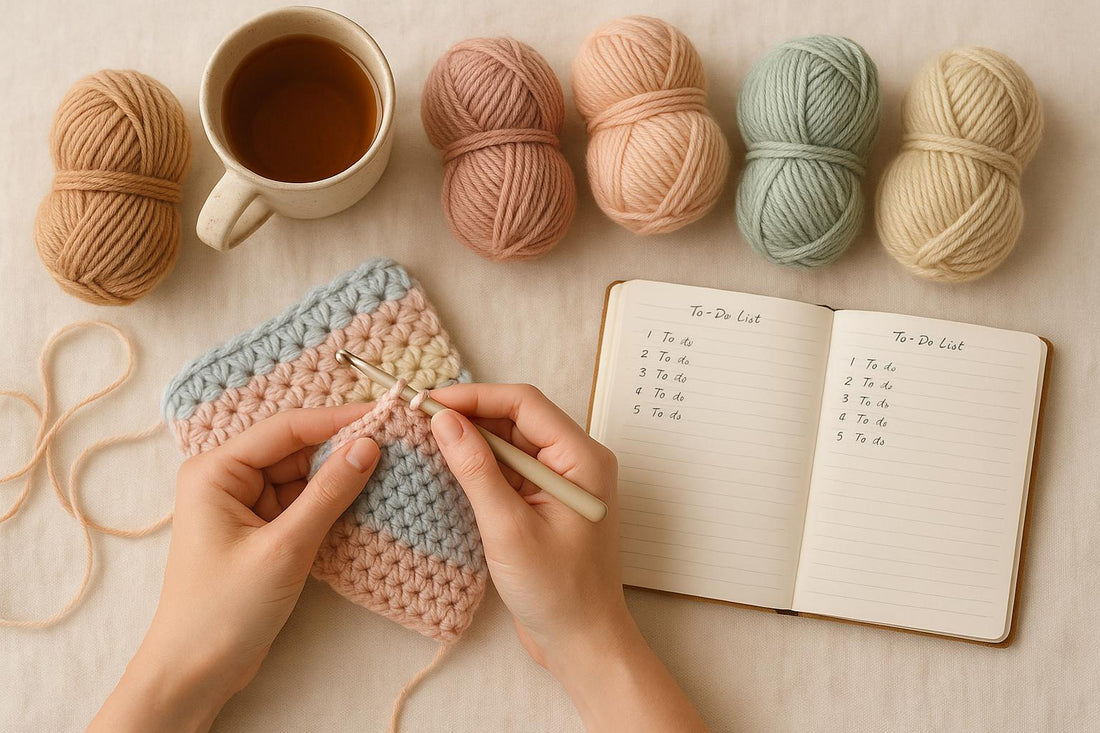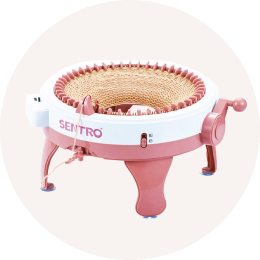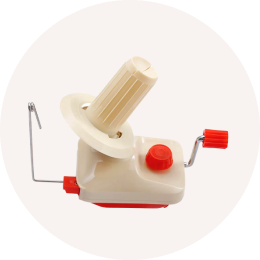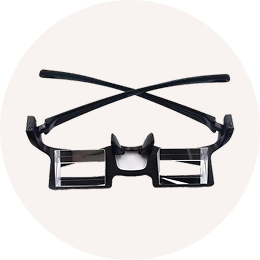Finding time for crochet can feel impossible when life is packed with work, family, and endless tasks. But even small changes can help you fit crochet into your day. Here are 7 practical tips to make it happen:
- Create a daily crochet habit: Dedicate 15–30 minutes daily, like morning coffee or evening downtime.
- Break projects into smaller steps: Focus on finishing small sections instead of the entire project.
- Take crochet anywhere: Use portable kits and work on simple projects during travel or waiting times.
- Blend crochet with daily tasks: Swap screen time for crochet or pair it with activities like listening to podcasts.
- Use weekends wisely: Schedule longer sessions for complex patterns or significant progress.
- Stay motivated: Alternate between easy and challenging projects to keep it interesting.
- Protect your hands: Take breaks, stretch, and use ergonomic tools for comfort.
Start small, stay consistent, and turn downtime into crochet time. It’s not about finding hours - it’s about making the most of the minutes you already have.
Crochet Habits That Quietly Save You Time
1. Build a Daily Crochet Routine
Making crochet a regular part of your life isn’t about finding extra time - it’s about building habits that fit seamlessly into your day. When crochet becomes as natural as your morning coffee or evening relaxation, you’ll find yourself reaching for your hook effortlessly.
The first step? Match your crochet time to your energy levels. Maybe you’re a morning person who enjoys a few peaceful stitches to start the day, or perhaps you prefer unwinding with yarn after the kids are asleep. The trick is to figure out what works best for you.
Here’s how you can make crochet a consistent part of your routine.
Block Out Time in Your Calendar
Schedule your crochet time like it’s a must-do appointment. Grab your planner, phone calendar, or whatever keeps you organized, and carve out specific time slots for crochet.
Start small - even 15 to 30 minutes a day can make a difference when you stick with it. Maybe it’s 20 minutes with your coffee before the house wakes up, or half an hour after dinner while watching TV. The key is consistency.
Label it "Crochet Time" or "Creative Hour" in your calendar. Writing it down shifts crochet from a “maybe if I have time” activity to a priority you’ve committed to.
Many crocheters find weekend mornings perfect for longer, uninterrupted sessions, while weekday evenings are better for quick, relaxing projects. Experiment with different times for a week or two to see what fits your lifestyle best.
Break Projects into Small Steps
Big projects can feel overwhelming, especially with a packed schedule. The solution? Break them into smaller, manageable steps that feel less daunting.
Instead of thinking, "I need to finish this entire blanket", focus on smaller goals like, "I’ll finish five squares today" or "This week, I’ll complete the border on section two." Tackling projects in bite-sized pieces makes progress feel more achievable and keeps you motivated.
A crochet project planner can help you map out these steps. Use it to set weekly mini-goals for larger projects, track details like yarn type, hook size, and gauge, and note special stitches. This not only keeps you organized but also helps you visualize your progress.
Tailor your projects to the time you have. Keep simple, portable projects for travel or waiting rooms, save less intricate patterns for social crocheting, and reserve more complex designs for quiet time at home.
Once your schedule and projects are sorted, it’s time to set up a space that supports your creativity.
Set Up a Dedicated Crochet Space
Pair your scheduled time with an organized, inviting workspace. A dedicated crochet area saves you from wasting time searching for tools or untangling yarn, so you can dive right into your project.
Your space doesn’t have to be fancy. It could be as simple as a basket by your favorite chair, a rolling cart you can move around, or a shelf in your bedroom. The goal is to have everything in its place so you can grab your project and start crocheting without delay.
Keep essential tools within arm’s reach: a variety of hooks, scissors, stitch markers, and a measuring tape. Store your current project in a way that protects it from pets, kids, or general household chaos but still makes it easy to pick up when you’ve got a few spare minutes. And don’t underestimate the importance of good lighting - whether it’s a small LED craft light or a nearby lamp, proper lighting can make your work more enjoyable and efficient.
For added convenience, keep a notebook or project tracker in your crochet space. Use it to jot down where you left off, the row you’re on, or any pattern adjustments you’ve made. This ensures you can pick up right where you stopped without wasting time figuring out what comes next.
2. Take Your Crochet Anywhere
One of the best things about crochet? It's incredibly portable. You don't need bulky equipment, so you can take it just about anywhere. Those little pockets of downtime - whether you're waiting at the doctor’s office, riding the bus, or sitting in the car during your kid’s soccer practice - can quickly turn into moments of progress on your latest project.
The trick is to pick the right projects and have your supplies ready to go. Here’s how you can make the most of your time and keep your crochet kit prepared for any adventure.
Pick Small, Lightweight Projects
When crocheting on the go, choose simple, repetitive projects that are easy to pause and resume. Smaller projects are ideal because they won’t weigh down your bag or require constant attention to a pattern.
Granny squares are a fantastic option. They’re compact, use basic stitches you likely already know, and don’t require bulky yarn. Plus, they’re versatile - you can stitch together a bunch of squares later to make a cozy blanket. Each square usually takes 15 to 30 minutes, making them perfect for short bursts of crafting.
Dishcloths and washcloths are another great choice. They’re quick to finish, use lightweight cotton yarn, and follow simple patterns that are easy to memorize. You can complete one in about an hour, even if that time is spread across several shorter sessions.
Other portable options include headbands, bookmarks, coasters, and simple scarves. These projects require minimal yarn, fit easily in a bag, and make lovely gifts. Scarves, in particular, are great because they’re narrow and can be worked on row by row without complicated shaping.
Skip anything too intricate - projects involving color changes, complex stitch patterns, or frequent increases and decreases are better suited for your home crafting time when you can focus and spread out.
Crochet During Travel and Wait Times
Transform idle moments into crochet time by keeping your supplies handy during travel or appointments. You’d be surprised how quickly those minutes add up - a 30-minute wait here, a 20-minute commute there, and suddenly you’ve gained hours of crafting time every week.
Train, bus, or airplane rides are perfect for uninterrupted stitching. If you’re flying, make sure to pack TSA-approved scissors to avoid any issues at security.
Waiting rooms are a goldmine for crochet time. Whether you’re at the dentist, getting your car serviced, or waiting for your kids’ activities to wrap up, these moments are ideal for simple projects. The key is to work on something that doesn’t need intense focus, so you can pause easily when your name is called or if you need to stay aware of your surroundings.
Even short car rides (as a passenger, of course) can be an opportunity to crochet. Keep a small project in the car for unexpected delays or downtime.
Keep a Ready-to-Go Crochet Kit
A well-stocked portable crochet kit is your best friend. Having everything organized and ready means you’ll never have to scramble for supplies when free time pops up.
Use a small tote bag, drawstring pouch, or even a large ziplock bag to keep your essentials together. Include these basics:
- A few crochet hooks in different sizes
- TSA-approved scissors
- Stitch markers
- A tapestry needle
- Your current project and enough yarn to complete it
It’s also helpful to include a small notepad or index card with pattern notes, your current row count, or any special instructions. This way, you won’t have to remember where you left off or guess what comes next.
For extra preparedness, pack a backup project - something simple like a ball of yarn and a pattern for granny squares or dishcloths. If you finish your main project or need a change, you’ll have something else to work on.
Store your kit somewhere convenient - by the front door, in your car, or in your everyday bag. The easier it is to grab, the more likely you’ll take it with you. Some crocheters even keep multiple kits: one for the car, one for work, and another that travels with them to appointments.
Make it a habit to refresh your kit regularly. Replace finished projects with new ones, restock yarn, and check that your tools are in good condition. A well-maintained kit ensures you’re always ready to turn downtime into productive crochet time.
3. Fit Crochet into Your Daily Activities
Incorporating crochet into your daily routine can help you make the most of your time without neglecting other responsibilities. By blending it with everyday activities, you can turn idle moments into creative and productive ones.
Swap Screen Time for Crochet Time
Instead of spending hours scrolling through your phone or binge-watching shows, try picking up your crochet hook. Those moments of mindless scrolling could easily transform into relaxing sessions where you work on a simple project, like a dishcloth or granny square, helping you wind down before bed.
If you love watching TV, there's no need to give it up entirely. Choose shows or movies that don't require your full attention - light sitcoms or something you've seen before - and use the time to work on a repetitive crochet pattern. You could also set specific "crochet hours", like after dinner or on a quiet Sunday morning, to create some screen-free time dedicated to your craft. It's a great way to balance your love for crochet with healthier tech habits.
Crochet While Doing Other Tasks
Crochet is perfect for multitasking. Pair easy projects - like scarves or blankets with simple, repeating rows - with activities that engage your ears, such as listening to audiobooks, podcasts, or music. The rhythmic motion of stitching can actually enhance your focus.
For parents, crochet can be a great companion during moments of supervision. Whether you're watching the kids play, overseeing homework, or waiting during lessons, those moments can be used to add a few rows. Even everyday tasks, like waiting for the laundry cycle to finish or dinner to cook, offer small windows of opportunity. These short bursts of creativity can add up throughout the week.
Get Your Family Involved
Why not make crochet a family affair? Teaching your family members to crochet can turn it into a fun, shared activity. Start with beginner-friendly projects, like crafting squares for a family blanket or creating simple pieces for an advent calendar.
Divide tasks based on skill levels - those with more experience can handle detailed sections, while beginners focus on easier stitches. Working together on a project not only creates something meaningful but also provides a chance to bond and step away from screens. Setting aside regular crochet time as a family allows everyone to learn from each other and celebrate the progress you make together.
sbb-itb-f7119e8
4. Make the Most of Weekends and Free Time
Weekends are the perfect chance to dive deeper into your crochet projects. With more time on your hands, you can move beyond quick stitches and focus on those larger, more intricate patterns that require extra attention. It’s an opportunity to make meaningful progress and enjoy the process without feeling rushed.
Schedule Longer Weekend Crochet Sessions
Set aside dedicated time slots on your weekend calendar, treating them like any other important appointment. For many, Saturday mornings or Sunday afternoons are ideal - quiet moments when interruptions are minimal, and you can fully concentrate. These longer sessions are great for tackling complex patterns like lacework or colorwork that demand focus.
Rather than crocheting all day, aim for two-hour blocks. This approach helps prevent hand strain and keeps your enthusiasm intact. Use these focused periods to work on challenging sections of your projects - the ones that require undivided attention. If you're creating something large, like an afghan, weekends are perfect for completing entire sections or motifs. Achieving noticeable progress in a single sitting can be incredibly motivating and set the tone for the rest of the week.
Prepare Your Supplies in Advance
Avoid wasting precious time searching for materials by getting organized beforehand. Wind your yarn into neat cakes or balls to prevent tangles and spot any imperfections early. Keep these wound yarn cakes stored neatly to avoid unnecessary mess.
Use a dedicated project bag for each active project. Include all essentials like yarn, hooks, patterns, and embellishments. This way, when you’re ready to crochet, everything you need is already in one place.
A portable notions bag is another great tool to have on hand. Fill it with universal supplies like scissors, stitch markers, yarn needles, measuring tape, and a pen or pencil. You can repurpose items like cosmetic pouches or small boxes to keep these tools organized and easy to grab.
Finally, ensure your yarn is stored in a cool, dry place to maintain its quality. Take time to declutter your stash - donate unused supplies to free up space and make it easier to find what you need.
Combine Crochet with Relaxation
Crocheting doesn’t have to be a stand-alone activity. Pair it with other relaxing weekend rituals to make the experience even more enjoyable. For example, work on repetitive projects while sipping your morning coffee on the porch or during a cozy movie marathon. These moments become even more rewarding when your hands are busy creating something beautiful.
Sunday evenings are particularly well-suited for crochet. As the weekend winds down, choose projects with simple, repetitive stitches that help you relax and ease into the week ahead.
Create a weekend crochet ritual to make the experience feel special. This could involve brewing a favorite tea, lighting a candle, or setting up a comfy space with good lighting. These small touches can help you transition into a more peaceful mindset, making your crochet time even more enjoyable.
To track your progress, keep a notebook or online spreadsheet where you record details like pattern names, yarn used, and start dates. Seeing how much you accomplish during these weekend sessions can be incredibly satisfying and help you plan future projects with ease.
5. Stay Motivated and Avoid Burnout
Once you've established a good routine, the next step is keeping your enthusiasm alive while steering clear of burnout. Crocheting should remain a source of joy, not stress. To do this, mix things up and connect with others who share your love for the craft.
Alternate Between Different Project Types
Let’s face it - your energy and focus can vary from day to day. That’s why having a mix of projects is a smart way to stay engaged. On days when you’re feeling sharp and creative, tackle a more intricate design. When you're tired or just need a break, stick to something simple and soothing. This approach keeps things fresh and prevents frustration.
Try keeping three types of projects going at once: one that's challenging, one that's moderately demanding, and one that's simple and relaxing. Switching between them based on your mood can help maintain your interest. Experimenting with new techniques or yarns can also reignite your excitement, while quick and easy projects bring a sense of accomplishment without a huge time commitment.
Protect Your Hands from Strain
Crocheting for long stretches can take a toll on your hands, wrists, and even shoulders. To avoid discomfort or injury, make it a habit to take breaks every 20 to 30 minutes. Use these breaks to stretch - rotate your wrists, stretch your fingers, and roll your shoulders to ease any stiffness.
Your grip on the hook matters, too. Holding it too tightly can lead to unnecessary tension. If you notice discomfort, try switching to hooks made from different materials, like bamboo or ergonomic designs. Posture is equally important: sit up straight and keep your work at a comfortable height to avoid straining your neck and back.
Connect with Other Crocheters
Sometimes, the best way to stay motivated is by sharing your journey with others. Being part of a crochet community can provide encouragement, inspiration, and even a sense of accountability. As Cilla Crochets puts it:
"Community is so important. It makes us feel safe, secure, and connected to others with the same interest, in this case, crocheting. It also helps us grow."
Online crochet groups on social platforms or dedicated forums are great places to share your progress, ask for advice, and discover new ideas. For a more structured experience, consider joining crochet clubs or participating in events like crochet-alongs, where you can work on projects alongside others.
Avery Lane Creations highlights the value of finding your crochet tribe:
"For the longest time, I felt so alone in my own little crochet bubble. My friends and family didn't get my passion for and obsession with all things crochet and yarn! Finding some crochet friends and a community that just get me and speak my language has been the best crochet motivation."
Don’t overlook local opportunities, either. Many yarn shops and craft centers host crochet circles or classes where you can connect in person. Virtual meetups with friends are another option if local groups aren’t available. Whether you’re stuck on a tricky pattern or just need a boost, reaching out to fellow crocheters can make all the difference.
Conclusion: Balancing Crochet with a Busy Schedule
Crochet can be a wonderful way to care for yourself, even when life feels hectic. We've discussed seven practical strategies to help you incorporate this creative outlet into your routine - whether it's through establishing daily habits or taking your projects with you wherever you go.
The secret? Start small and stay consistent. It’s not about how long you crochet, but how often. A few stitches during your morning coffee, a quick session on your lunch break, or a moment of creativity while waiting for an appointment can all add up to something meaningful over time.
And here’s the thing: you don’t need to feel guilty about making time for crochet. It’s not just a hobby - it’s a way to recharge and take care of yourself. Think of it as fuel for managing the demands of life with more energy and joy. Start with just one strategy from this article. Maybe it’s setting aside five minutes a day or dedicating a specific time each week to crochet.
"When we take care of ourselves, when we take time to recharge our batteries, it is easier to take care of everyone or everything else and we can do it with more joy."
- Heather, The Unraveled Mitten
To make crochet a seamless part of your routine, choose simple projects that are easy to pick up and put down when time is tight. Save the more intricate patterns for those moments when you can fully immerse yourself.
FAQs
How can I stay motivated to crochet when my schedule is unpredictable?
Staying motivated to crochet when your schedule is all over the place can feel tough, but there are a few easy tricks to keep your enthusiasm alive. Start by figuring out what’s getting in the way - are you short on time, feeling uninspired, or just plain tired? Once you pinpoint the issue, you can tackle it head-on.
Try squeezing in short crochet sessions, even if it’s just 10 minutes here and there. Those little bursts of creativity can be incredibly satisfying. Celebrate the progress you make, no matter how small, and think about sharing your projects with friends or online groups - it’s a great way to get a boost of encouragement. If you’re feeling stuck, step away for a bit to clear your head and come back refreshed. Every stitch adds up, and there’s no need to rush - crochet at the pace that works for you!
How can I avoid hand strain when crocheting often?
To keep your hands comfortable and prevent strain while crocheting, it’s important to focus on posture and tools. Sit with your back straight, feet flat on the floor, and shoulders relaxed. Using crochet hooks with padded or larger handles can also ease the strain on your hands by providing a more comfortable grip.
Remember to take regular breaks to rest your hands. During these breaks, try simple stretches like wrist circles or gently extending your fingers to boost blood flow. Also, avoid gripping your hook or yarn too tightly - this can lead to unnecessary tension and fatigue. These small changes can go a long way in making your crochet sessions more enjoyable and pain-free!
How can I find time to crochet without feeling overwhelmed by my busy schedule?
Balancing crochet with a packed schedule doesn’t have to be complicated - it’s about making small, mindful adjustments. Take a look at your daily routine and spot those little moments where crochet could fit in. Think about times like your lunch break, waiting at appointments, or even while catching up on your favorite TV show. These short bursts of time can add up before you know it.
Another idea is to carve out a dedicated crochet window. Even just 15 to 30 minutes a day can make a noticeable difference. Maybe it’s after dinner or right before bed - find a time that naturally works for you and make it part of your routine. Keeping your supplies tidy and your projects planned in advance can also save you time and make it easier to dive right in when the moment strikes.
Most importantly, set realistic goals and focus on enjoying the process. Even a few stitches here and there can be a relaxing escape, helping you unwind without adding stress to your day.



















